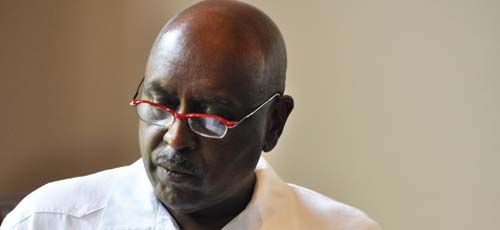 |
Dr Charles Alexander from UCLA
Photo: O'Ryan Heideman |
International and local experts recently gathered on the Bloemfontein Campus to deliberate over the topic of diversity.
Student participation and mobility dramatically increased in higher education worldwide. Cultural, political, economic and social factors on a national and global scale, have brought the reality of diversity into the operational spaces of Higher Education Institutions. These challenges are not exclusive to South Africa, though. In the Netherlands and USA, universities are also challenged by the demands of an increasingly diverse student population.
Prof Jonathan Jansen, Vice-Chancellor and Rector of the UFS, acted as one of the keynote speakers during a two-day colloquium hosted by the Institute for Reconciliation and Social Justice. In an impelling address, Prof Jansen argued that change cannot be affected on a university campus if the surrounding community does not change as well. He also noted the spread of a culture of silence surrounding issues of misbehaviour. He urged that we need to find courage again to speak out. From the level of government, media and churches to the private spaces of our homes, we have to co-create an environment of care.
This message closely tied in with that of Prof Shirley Tate’s from the University of Leeds. In her keynote, she asserted that mere tolerance of someone different from you can lead to even more alienation. The path to true reconciliation is grounded in the intimacy of friendship. Friendship and empathy lead to trust and transcend racism.
Another keynote speaker from abroad, Dr Charles Alexander from the University of California, delineated a model for inclusive excellence. He explained that the major problem of true transformation is not due to a lack of ideas, but in the implementation thereof. “Realities of implementation short circuit the change process,” he said. He explained how campus environments can adapt in order to support and enhance lasting inclusivity.
We have to become complicit in the process of transformation, Prof Dr Ghorashi, Professor of Diversity and Integration at the Vrije Universiteit Amsterdam, conveyed. Linking up with the issue of silence, she demonstrated the power of speaking out, using examples from her extensive research among victims of violence. It is imperative, she maintains, that for transformation to materialise, we need to create safe spaces in which we can share our vulnerabilities.
Footnote: Due to unfortunate circumstances, both Prof Dr Ghorashi and Prof Shirley Tate could not personally attend the colloquium as planned. Their respective keynotes were read to the audience on their behalf.